May 30, 2025
What is perspective in photography? Tips on how to make the most of perspective and how to choose lenses
What is perspective in photography? Tips on how to make the most of perspective and how to choose lenses


In photography, it is important to understand the concept of "perspective" in order to express power and depth. If you can use perspective effectively, you may be able to solve problems such as "my photos look flat" or "my photos lack impact." In this article, we will explain everything from the basics of perspective to how to take photos according to the scene.
Perspective is the sense of depth and distance that is created by the relative positions and sizes of subjects, as well as the sense of distance from the background. Just like the human eye, a camera also captures distant objects as small and close objects as large. This is the basic principle of perspective.
This sense of depth can be emphasized or suppressed by the focal length of the lens and the shooting position. For example, the closer you are to the subject, the stronger the sense of depth will appear, and the further away you are, the weaker the sense of depth will appear.
Wide-angle lenses emphasize perspective
Wide-angle lenses have a wide angle of view, emphasizing the sense of distance between subjects, allowing for more powerful expressions. For example, when shooting a subject from close range, the subject in the foreground appears larger and the subject in the background appears smaller, increasing the sense of perspective. In particular, when photographing architecture or landscapes, emphasizing perspective can help to express visual impact and depth. Wide-angle lenses are also useful in situations where you want to create a sense of spaciousness, such as the interior of a building or a narrow alley.
Telephoto lenses reduce perspective
Conversely, with a telephoto lens, the sense of distance to the subject is compressed, making distant objects appear closer than they actually are, weakening the perspective. This phenomenon is called the "compression effect." On the other hand, the compression effect makes the background appear densely layered, emphasizing the strength of the subject. It is also possible to make the subject stand out by blurring the background. Remember this as a different form of expression technique to perspective.
Learn about perspective
To make the most of perspective, it is helpful to have knowledge of perspective. Perspective is a technique for expressing the sense of distance and depth felt in a three-dimensional world on a two-dimensional plane. Here we will briefly introduce vanishing points and the types of perspective.
What is a vanishing point?
A vanishing point is a point in the distance where parallel lines appear to converge. For example, in a photo of a straight road or railroad tracks, the straight lines will appear to converge to a single point at the back of the screen. By using this phenomenon, you can create a sense of perspective in your photo.
The impression of the perspective will change depending on where you place the vanishing point on the screen. Placing it in the center will create a symmetrical and stable impression, while placing it to the left or right will create an impression of movement. When photographing a subject where you can sense lines like this, it's a good idea to keep the vanishing point in mind when shooting.
Types of perspective and their effects
There are various perspective techniques, including linear perspective, chromatic perspective, atmospheric perspective, and superimposed perspective. Linear perspective is particularly easy to apply in photography. Linear perspective is a technique that makes use of the way linear elements converge as they move away from one another. Here we will introduce three representative linear perspective techniques: one-point perspective, two-point perspective, and three-point perspective.
One point perspective
One-point perspective is a composition in which lines converge towards a single vanishing point. This effect is particularly evident in long corridors or roads photographed from directly on, creating a strong sense of depth. Placing the vanishing point in the center will also create a sense of symmetry and stability.
To make the most of one-point perspective, stand in front of the subject and be conscious of composing your image so that linear elements converge towards the center of the screen. While it is easy to create a balanced composition, it can also make the image look a bit monotonous, so try to avoid boredom by placing a subtitle in the foreground.
Two point perspective/h4>
Two-point perspective is a composition in which lines converge towards two vanishing points. For example, if you photograph a building from a corner, the lines on the ceiling and the ground will appear to converge to two points on the left and right. This technique can simultaneously express horizontal breadth and depth, and is often seen in architectural photography.
The key to making the most of two-point perspective is to compose your shot at an oblique angle from the corner of the subject. Photographing the corner of a building or hallway from an angle of about 45 degrees will create vanishing points on the left and right, creating a more three-dimensional impression.
Three point perspective
Three-point perspective is a composition with vanishing points in three directions: vertical, horizontal, and diagonal. For example, this effect can be seen when looking up at a skyscraper with a wide-angle lens, and it can create a more dynamic perspective. It creates a photo that emphasizes height and depth, making it suitable for scenes where you want to convey an overwhelming presence.
When applying three-point perspective, try using a wide-angle lens to shoot from an angle looking up at the subject. By removing the horizon from the frame, the vertical impression will be stronger.
How to Create Perspective with a Wide-Angle Lens
As mentioned above, wide-angle lenses are the best lenses for making the most of perspective. In addition, because they can capture a wide range from the foreground to the background by taking advantage of their wide angle of view, they are also great for creating powerful compositions in landscape photos. Here are some tips on how to create perspective with a wide-angle lens.
Shoot with perspective in mind
When taking photographs with perspective in mind, try to incorporate linear elements (roads, buildings, overpasses, etc.) into the frame. These lines create vanishing points, making it easier to sense depth. As mentioned above, it's also important to be aware of where to place the vanishing point. Placing it in the center of the screen will create a stable composition, while placing it on the edge will create a dynamic composition. Also, holding the camera at a low angle so that it's touching the ground will further enhance the sense of perspective in terms of height and depth.
Be aware of the overlap of the foreground, middle ground, and background
To effectively express perspective, it is also important to be aware of the overlapping of the foreground, midground, and background. Place a subtitle in the foreground that brings out the main subject, and give the picture a sense of depth. Also, be aware of the composition so that the elements in the middle and background get gradually smaller, and you will create a natural sense of depth. Express the sense of perspective through the overlapping of each element, creating a three-dimensional impression.
Shooting from different angles
A low angle (angle where the lens is pointed from bottom to top) emphasizes vertical and deep lines, creating an impression of scale. It is particularly effective when photographing buildings and long objects.
On the other hand, a high angle (angle where the lens is pointed from top to bottom) can express the expanse of space from a bird's-eye view. It will allow you to capture impressive scenery such as cityscapes and squares. Shooting from an oblique angle also adds a sense of depth through the effect of two-point perspective. It is also recommended to intentionally change the angle and experiment with how it changes the way the subject appears.
Subjects that make the most of perspective
Knowing which subjects are easy to use perspective for will broaden the scope of your expression. It's a good idea to consciously try shooting subjects that are easy to use perspective for and develop a sense of perspective.
Architecture and buildings
Buildings are great subjects to take advantage of perspective. Shooting a skyscraper from an angle looking up at it with a wide-angle lens creates a powerful three-point perspective. You can also use the linear elements of the building to create a vanishing point.
Furthermore, shooting from the corner of a building with a wide-angle lens emphasizes the three-dimensional effect created by two-point perspective. Try it out with buildings around you, such as department stores, office buildings, and apartment buildings.
Landscape
There are several ways to create dynamism in landscape photography. For example, if you use a telephoto lens to shoot a landscape of mountain ranges or buildings, the background will overlap due to a compression effect, creating a sense of depth. On the other hand, if you use a wide-angle lens, place secondary elements such as rocks or trees in the foreground to create a sense of scale and depth. Also, since the effect of one-point perspective is likely to appear in landscapes where the horizon is visible, it is a good idea to consider this when composing your shot.
Streets and roads
Streets and roads are one of the subjects that clearly show the effect of perspective. A road photographed from directly in front is a typical example of one-point perspective, with the buildings, utility poles, streetlights, etc. on both sides of the road converging toward the vanishing point creating an impressive effect. By capturing distant cars and utility poles getting smaller, you can naturally sense the sense of depth. Curved structures such as S-shaped curves also make interesting subjects. Try photographing not only straight roads, but also curved roads and mountain paths with perspective in mind.
Indoors with depth
Long corridors, passageways, train stations, and other indoor spaces with depth are also good subjects for which one-point perspective can be used. You can create geometric beauty by placing the vanishing point in the center, or you can emphasize depth by using an oblique angle. Also, capturing the depth of the ceiling dynamically from a low angle allows you to express space in a way that is unique to a wide-angle lens.
Statues and objects

Three-dimensional objects such as statues and monuments are also good subjects to photograph with perspective in mind. For example, looking up at a statue from below creates a powerful three-point perspective effect. Also, when shooting a line of multiple objects, you can create a natural sense of perspective by arranging them so that they overlap from closest to furthest, while also keeping in mind the diagonal composition.
Use perspectives effectively
Perspective is an important element in giving depth and three-dimensionality to a photograph. Wide-angle lenses emphasize the sense of perspective, making it easy to take photographs that make use of perspective. In addition to perspective techniques such as one-point perspective, you can also take photographs with different impressions by being conscious of the angle. Please try it out with a subject close to you.

Lens Featured in this Impression
-
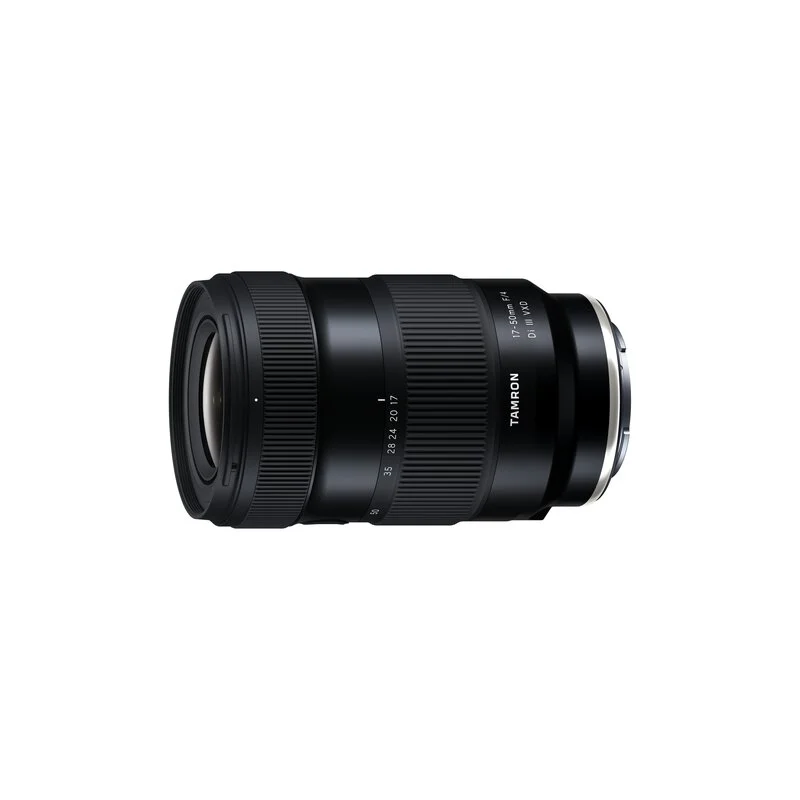
-
17-50mm F/4 Di III VXD a068(Model )
It's the world’s first lens covering from ultra wide-angle 17mm to the standard 50mm focal length. The highly-compact TAMRON 17-50mm F/4 Di III VXD (Model A068) for Sony E-mount full-frame mirrorless cameras offers maximum versatility for still and video creators. From landscapes to living rooms, this lens captures all that you see.
-
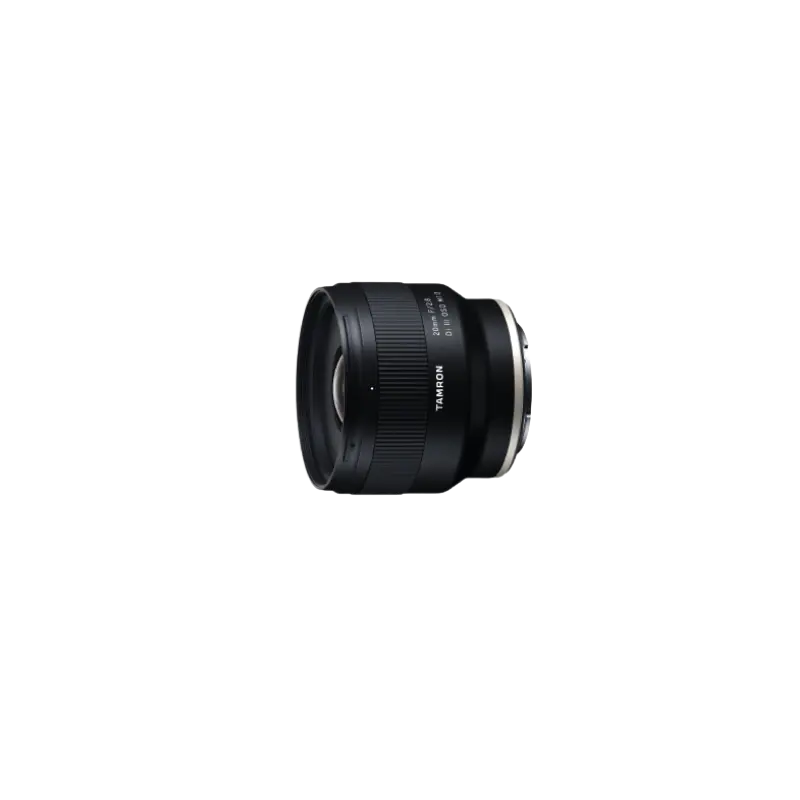
-
20mm F/2.8 Di III OSD M1:2 f050(Model )
The 20mm F/2.8 Di III OSD M1:2 (Model F050) is a 20mm fixed focal lens featuring F/2.8 and high close-up shooting, allowing you to enjoy ultra wide-angle photography in earnest. With a MOD (Minimum Object Distance) of 0.11m, you can enjoy the world of ultra wide-angle photography that you have never experienced before.
-
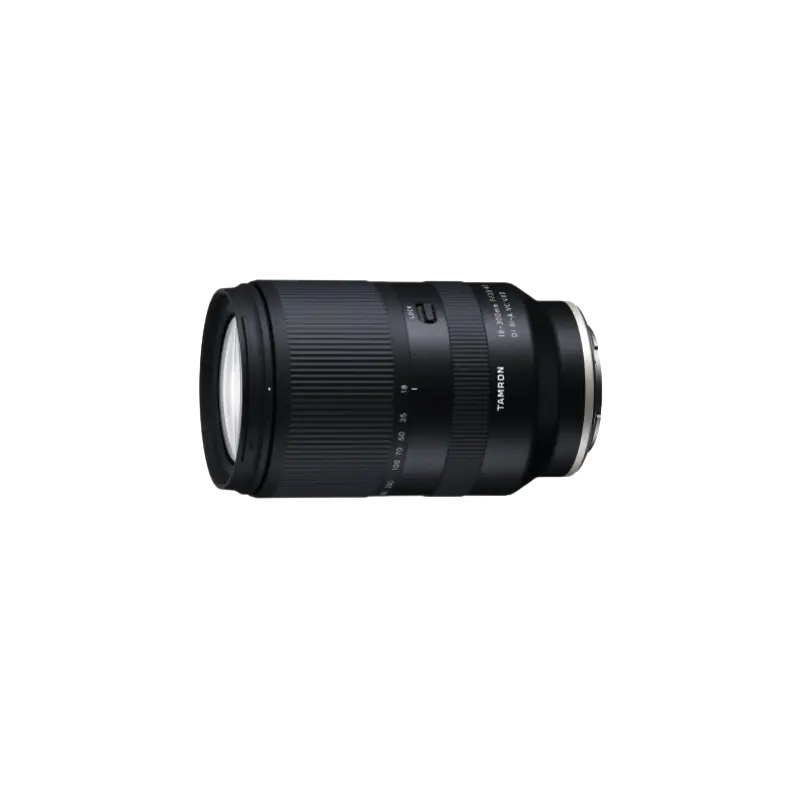
-
18-300mm F/3.5-6.3 Di III-A VC VXD b061(Model )
The 18-300mm F/3.5-6.3 Di III-A VC VXD (Model B061) achieves 16.6x zoom and is equipped with the VXD for a quiet and agile AF drive. The optical construction includes several special lens elements, specifically four LD (Low Dispersion) and three hybrid aspherical lens elements. These elements help to produce clear, sharp images from the center to the corners and deliver top-level image quality in its class. It is enabled close-up shooting and is equipped with the VC system. The 18-300mm F/3.5-6.3 makes photography more fun because you can use it in an unlimited number of situations. It’s so versatile, it will inspire you to push your creativity further and further.
-
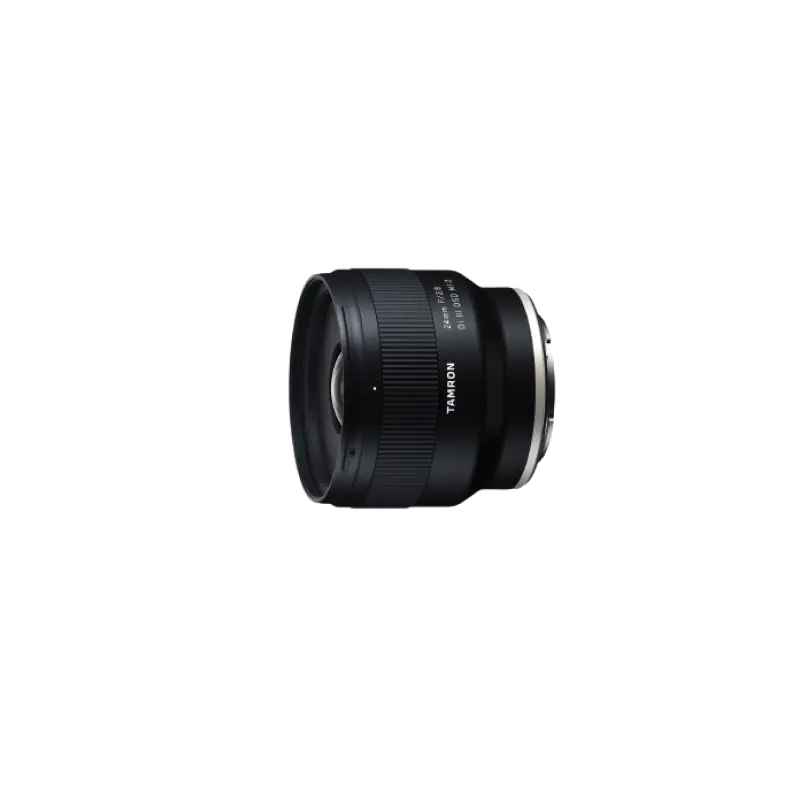
-
24mm F/2.8 Di III OSD M1:2 f051(Model )
The 24mm F/2.8 Di III OSD M1:2 is a wide-angle fixed focal lens that allows you to get incredibly close-up. Its focal length is 24mm and the MOD (Minimum Object Distance) is 0.12m. The compact and lightweight design that allows you can shoot light, making it ideal for snapshots.
-
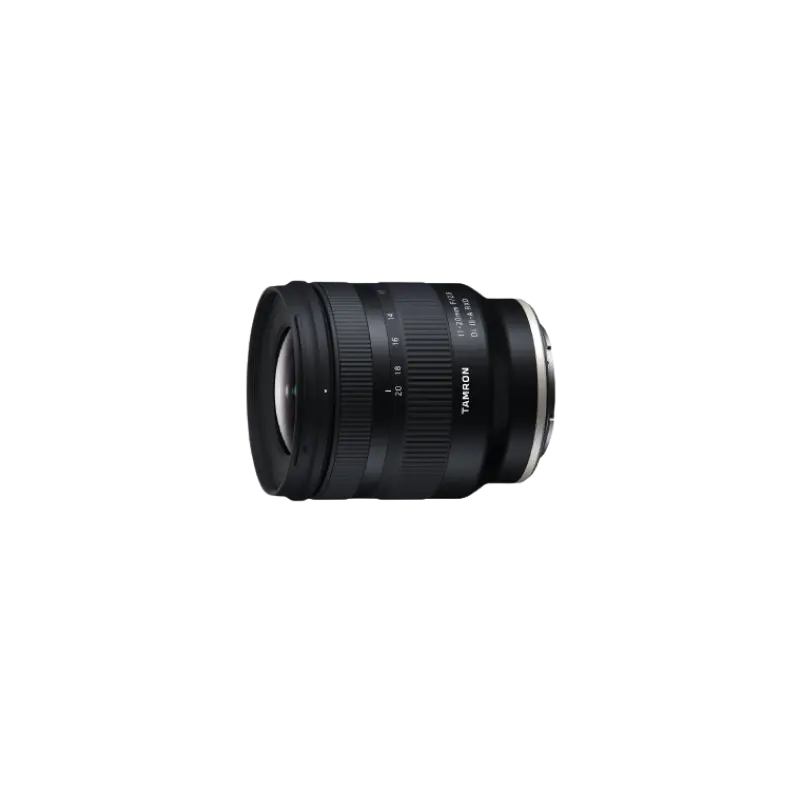
-
11-20mm F/2.8 Di III-A RXD b060(Model )
Product Page | 11-20mm F/2.8 Di III-A RXD (Model B060) is the world's first compact, lightweight F2.8 ultra wide-angle zoom lens for Sony E-mount APS-C mirrorless cameras. Can be a great choice for video shooting.
















